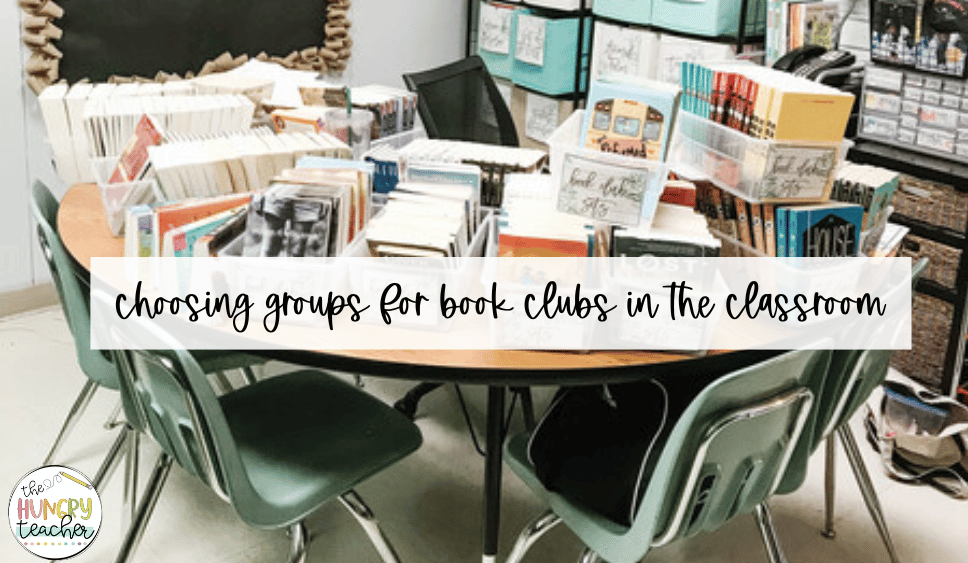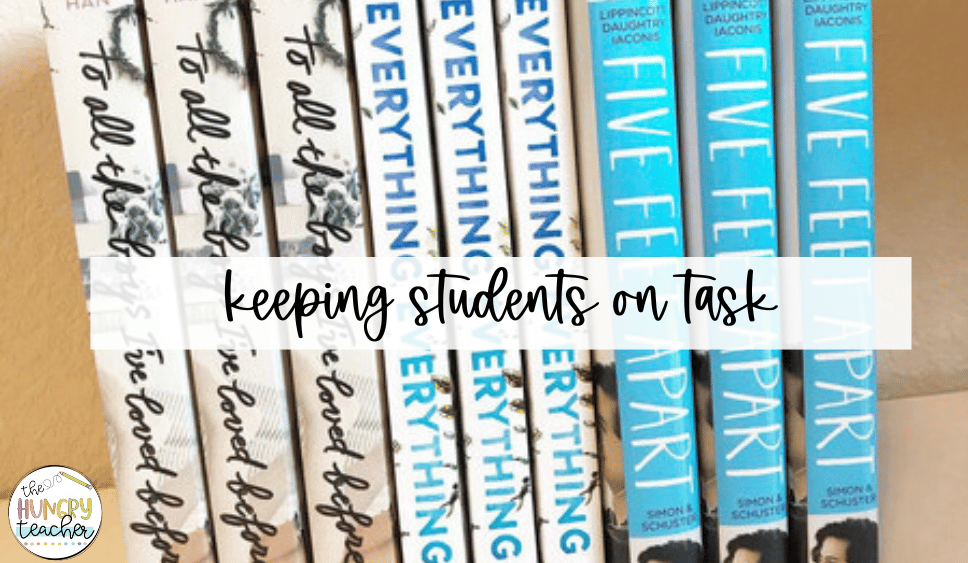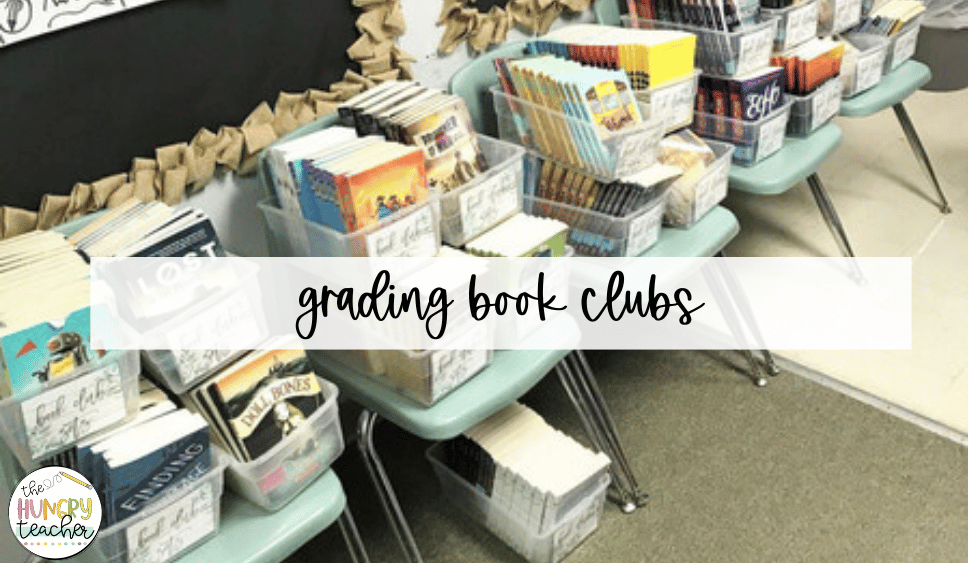hey friend!
I'm Martina.
I provide practical, time-saving strategies that actually work—so you can engage your students, teach effectively, and reclaim your time from the exhausting planning-grading cycle.
Browse Our ELA Resources
Tips and Strategies for Book Clubs in Middle School ELA
Setting up book clubs in the classroom can be intimidating! You’re giving students lots of freedom and choice, which means things don’t always go as planned and some students will cause problems. However, after years of using book clubs in the classroom, I can confidently say there are some tips that work better than others. So, if you’re looking for tried-and-true tips to run successful book clubs, you’ve found the right blog.

Choosing Groups for Book Clubs in the Classroom
There is a lot of room for student choice and freedom within book clubs, but that doesn’t mean students get to pick everything. When it comes to creating groups, I highly recommend you decide who will work together.
The reality is that letting students choose their groups can often lead to behavior challenges, and you want to set up your book clubs for success. This does not mean that students can’t work with their friends, but just keep in mind who would work well together and who wouldn’t.
A simple way to organize your book clubs in the classroom is literally by the book! Put students who are reading the same book, author, genre, or other related topics together. This will also make discussions within the group a little easier since there is a commonality.
Another way you can group students is by ability. I don’t love to group in this way, but it can be a really helpful system if you have a wide range of student abilities in your class.
Keep in mind that students do not need to be reading the same book to have a successful book club. However, if they are reading the same book, that may make it easier on you from an organizational standpoint.
Selecting Novels for Book Clubs
Student choice is important when it comes to book clubs in the classroom, and I recommend letting students get familiar with their options before having them choose. I liked to do with through my Starbooks Book Tasting. This coffee shop-style book tasting gives students a chance to browse and flip through their options. Then, have students rank books from most interesting to least interesting. You can use this guide to create groups and assign novels.
I know that sometimes the biggest problem is getting access to various books. I wrote a blog specifically on how to get books for your classroom without it costing you an arm and a leg. Don’t feel like you have to go overboard on options. Even two or three options offers more choice than just one book!
Now, what if your students have selected their books and someone decides they hate theirs. To be honest, I let them abandon it. I’d much rather students be interested in reading and putting in the effort to comprehend rather than not working and just pretending to read. Of course, they will have to pick a new book, and it doesn’t mean they can change groups (‘cause you might have some sneaky students who think otherwise).

Keeping Students on Task
The fear of off-task behavior keeps a lot of teachers from starting book clubs in the classroom. Don’t let this fear hold you back! The reality is that you will always have students who get off topic or students who make book clubs a challenge. We all know this!
It’s likely that these same students would struggle to stay on task no matter what you’re doing. Go into book clubs with the expectation that this will happen and have a plan for what you will do with groups who can’t get on task or students who are acting out.
One way to manage behavior in book clubs is to have clear assignments that must be completed, so there is accountability every time they meet. It’s also important that during book clubs, you’re walking around, checking in, and even meeting with groups. If you want a simple way to keep students on track, take a peek at my book club forms.
Challenging ELA Skills with Book Clubs
While book clubs in the classroom offer student choice, they are not a free-for-all. Book clubs are a great chance to dig deep into ELA skills and challenge students’ ability to apply those skills. You do this through mini lessons, guiding questions, writing prompts, and a really clear standards layout for the unit.
Even if students read different books, they can apply the skills they learned from the mini lesson. For example, you could teach a mini lesson on citing textual evidence when answering a reading response. Then, complete an example together in class using a mentor text. Lastly, send students to apply their knowledge of textual evidence but with their own novels instead.
Students can also support each other in book clubs. Having students read separate books can actually be useful in this situation because students are forced to complete their own assignments – they can’t rely on copying each other’s work.

Grading Book Clubs
When it comes to grading, don’t overcomplicate things. There are two ways I’d recommend tackling grades from book clubs in the classroom. First, grade assignments like you normally would! That means if students were supposed to complete a written response or answer a guiding question, then you will grade that work based on a rubric, like usual. Don’t get caught up on students having different books. Focus on looking for student understanding and if they met the requirements for the assignment.
Second, meet with students during book clubs. You can keep track of student work and progress on a tracking sheet and then use this information to grade holistically. For example, you might require book clubs to meet with you for ten minutes each week. During this time, discuss what they’ve read, go over some of the guided questions, and check in on assignments. Use this information to assign a grade for the week.
Book clubs in the classroom can be a fantastic way to get students engaged in reading. You can practice any ELA skill within the context of book clubs, and you can keep students invested in their learning by allowing space for student choice. Remember, starting book clubs in the classroom can be intimidating, but over time I hope you’ll see just how beneficial they are.
Want more help implementing book clubs in your classroom. I’ve taken everything I’ve learned over the years and created what has become my most popular workshop: Book Clubs in a Box.

Want a sneak peek at teaching The Hungry Teacher way—with support, structure, and strategy?
When you join the waitlist for The Hungry Teacher’s Hub membership, you get three free classroom-ready resources: a theme unit, an expository writing unit, and a grammar unit introducing mentor sentences. Plus, you’ll get immediate access to a selection of exclusives from the Hub, including editable sub plans, pacing guides, and more.
No strings attached. Just resources you can use right now—and a heads-up when the Hub opens.
3 Free Middle School ELA Units—yours to keep!
JOIN THE WAITLIST + A FREE GIFT
Where to next, line leader?
Welcome to The Hungry Teacher! We create resources that are easy to use, practical, and get results. Teach with confidence—and make it home before dinner.
xo, the hungry teacher